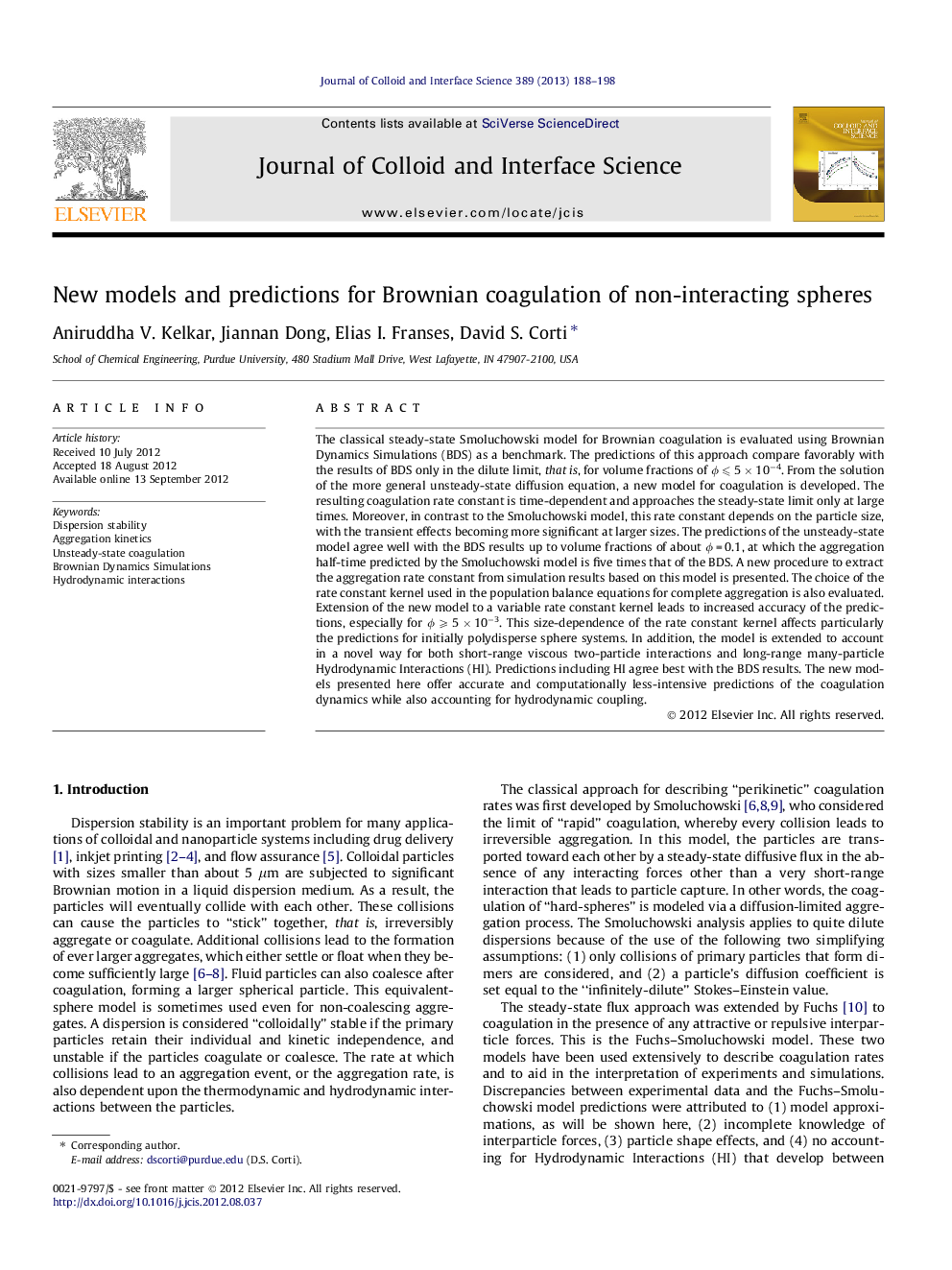| کد مقاله | کد نشریه | سال انتشار | مقاله انگلیسی | نسخه تمام متن |
|---|---|---|---|---|
| 607943 | 880564 | 2013 | 11 صفحه PDF | دانلود رایگان |

The classical steady-state Smoluchowski model for Brownian coagulation is evaluated using Brownian Dynamics Simulations (BDS) as a benchmark. The predictions of this approach compare favorably with the results of BDS only in the dilute limit, that is, for volume fractions of ϕ ⩽ 5 × 10−4. From the solution of the more general unsteady-state diffusion equation, a new model for coagulation is developed. The resulting coagulation rate constant is time-dependent and approaches the steady-state limit only at large times. Moreover, in contrast to the Smoluchowski model, this rate constant depends on the particle size, with the transient effects becoming more significant at larger sizes. The predictions of the unsteady-state model agree well with the BDS results up to volume fractions of about ϕ = 0.1, at which the aggregation half-time predicted by the Smoluchowski model is five times that of the BDS. A new procedure to extract the aggregation rate constant from simulation results based on this model is presented. The choice of the rate constant kernel used in the population balance equations for complete aggregation is also evaluated. Extension of the new model to a variable rate constant kernel leads to increased accuracy of the predictions, especially for ϕ ⩾ 5 × 10−3. This size-dependence of the rate constant kernel affects particularly the predictions for initially polydisperse sphere systems. In addition, the model is extended to account in a novel way for both short-range viscous two-particle interactions and long-range many-particle Hydrodynamic Interactions (HI). Predictions including HI agree best with the BDS results. The new models presented here offer accurate and computationally less-intensive predictions of the coagulation dynamics while also accounting for hydrodynamic coupling.
Figure optionsDownload high-quality image (55 K)Download as PowerPoint slideHighlights
► New unsteady-state models for coagulation are presented.
► Unsteady-state models agree with simulations up to volume fractions of 0.1.
► Steady-state model agrees with simulations up to volume fractions of 0.0005.
► Effects of rate kernel, hydrodynamic interactions and polydispersity are studied.
► A method to obtain aggregation rate constant from experimental data is provided.
Journal: Journal of Colloid and Interface Science - Volume 389, Issue 1, 1 January 2013, Pages 188–198